The Eureka location of Redwood Coast PACE (a Program of All-inclusive Care for the Elderly), on California Street. Humboldt County has the only rural PACE program in California. | Photo by Ryan Burns. All other photos courtesy Humboldt Senior Resource Center.
###
If you live in Humboldt County, you’re probably accustomed to people complaining about the quality and availability of health care. But that’s not what you’ll get when you talk to 71-year-old Eureka resident Jane Mitchell. She has nothing but praise for the wraparound services she receives through Redwood Coast PACE.
“If PACE wasn’t here, I doubt I’d still be alive,” Mitchell said in a recent phone interview.
PACE, which stands for “Program of All-inclusive Care for the Elderly,” is a nationwide model of care designed to help people “age in place” rather than move into nursing homes. There are 177 PACE organizations operating in 33 states and the District of Columbia, but Redwood Coast PACE, which is celebrating its 10th anniversary this month, is the only rural PACE program in the state.
Its success was by no means a given, but after opening with just two participants in 2014, the program, operated though Humboldt Senior Resource Center (HSRC), has gone on to serve more than 650 older adults over the past decade. (It currently serves 318 participants per month.) HSRC opened a second Adult Day Health & Redwood Coast PACE Center in Fortuna in 2020, and a third location, including a day center and rehab facilities, will soon open on the Mad River Community Hospital campus in Arcata.
For participants — a term the program’s care providers prefer to “patients” — the coordinated care they receive can literally be a life saver.
“PACE has increased my lifespan, I think, by at least 20 years,” Mitchell said. “Maybe longer.”
Until about two years ago, Mitchell was suffering from a variety of serious health issues, including limited mobility due to injuries from an old a car accident, plus diabetes and high blood pressure, which led to a series of strokes. She’d tried and failed to lose weight and was mostly confined to a wheelchair, but Mitchell’s granddaughter, who worked at PACE, urged her to enroll in the program rather than continue with the nurse practitioner who’d been her primary care provider.
“She didn’t like the way I was being cared for, and she can be rather persuasive in her own way,” Mitchell said. Her granddaughter has two kids of her own, and she wants Mitchell to have time to bond with them.
PACE serves people age 55 and older who require a nursing home-level of care but who wish to remain living at home or in the community. Licensed and regulated by the Centers for Medicare & Medicaid Services (CMS) and the California Department of Health Care Services, Redwood Coast PACE employs an interdisciplinary team of “care partners,” including physicians, nurses and nurse practitioners, social workers, a dietician, physical and occupational therapists and more. For qualifying participants, 100 percent of PACE’s services are covered by Medi-Cal and Medicare.
Mitchell followed her granddaughter’s advice and now has a team of people who help manage her care. She said she’s lost 40 pounds in the last six months. Her diabetes is well under control, and through a combination of medications her blood pressure has gone way down. With help from a physical therapist, Mitchell is also walking again and only needs her electric wheelchair for longer journeys.
“I feel happy that I’m being cared for,” Mitchell said, “so much so that I’m telling all of my friends that are 55 and older, ‘Go to PACE. If you really want to be taken care of, go to PACE.’”
She credits PACE with giving her the chance to know her great-grandchildren. She has now convinced both her husband and her brother to join PACE.
“I can be very persuasive as well,” she said.
Redwood Coast PACE participants and care partners enjoying an outing.
###
The Outpost recently sat down with Redwood Coast PACE Director Barbara LaHaie and Medical Director Dr. Jennifer Heidmann to talk about why the program has been so successful here in Humboldt County. And in a separate interview we spoke with Humboldt Senior Resource Center CEO Melissa Hooven, who described the program’s development and explained the ways it differs from most medical care in America.
“It was quite a leap of faith for the people that brought this program into our community,” said Heidmann, who joined the organization a few months before the program opened its doors. “It’s not an easy task to start a PACE program, and it takes a lot of organization and courage to do it in a rural area in particular.”
Hooven said the idea to bring a PACE program to Humboldt County arose from various stakeholders in the community, including her predecessor Joyce Hayes, who worked with HSRC for 28 years.
“When Joyce was going around the community and doing presentations to stakeholders, we all thought, ‘We don’t think this is gonna work — like, this is wild,’” Hooven recalled.
But the stakeholders pushed forward, navigating all the regulatory hurdles required to implement the new model, and with support from the region’s state representatives the program launched in September of 2014.
LaHaie, who spent nine years working for the Humboldt County Department of Health and Human Services (and who considered staying there through retirement), joined the Redwood Coast PACE team about eight and a half years ago. When she started, she said, there were 72 participants, and administrators said they’d need to reach 100 to break even.
“And that was true,” LaHaie said. “When we got to 100 we started to be able to spread those costs over [the whole group].”
All care is coordinated through PACE, which serves as both provider and insurer.
“We have someone who makes all the appointments for the participants,” LaHaie said. “We have a driver that comes and picks them up and takes them there. We have an in-home care [team] that works for us as well. They’ve got their meals. I mean, who wouldn’t want this kind of medical care?”
Hooven agrees. “We in the PACE world refer to it as the model of care that everyone should have,” she said. “It’s incredible. When you’re referred to the program you go through the enrollment process and all of a sudden you have a team of people supporting you … from your intake team to your social workers, physical therapy, occupational therapy, so you have full rehab.”
Plus there’s a primary care physician, a nursing team, a day center with a gym and a range of social activities, such as bingo, cooking demonstrations, on-site meals, exercise classes and field trips.
“It’s just a phenomenal program that I think is working in our area because of the unique challenges that we have here,” Hooven said. “We manage whole-person care. We’re responsible for their medications, making sure they get to specialty services. Sometimes that means we have to fly them out of the area to get the care that they need.”
PACE participants dressed as witches for a meal at the day center.
###
Research has validated claims that PACE programs are not only a superior model of health care when it comes to patient outcomes; they’re also more cost-effective for the state and federal government.
PACE programs receive a set amount monthly from Medicare and Medicaid, and those monthly payments are 15 percent lower, on average, than Medicaid would typically pay for low-income seniors, according to the National PACE Association.
“Part of the reason the PACE program in general is popular on both sides of the [political] aisle is that, ultimately, it saves money for the system because people are not having to get their primary care in the ER as much,” Heidmann said. “And there are no really long stays in the hospital because of [having] nowhere to go afterwards.”
Studies have shown that PACE programs reduce hospitalizations, emergency room visits and nursing home stays. A recent New York Times report notes that participants survive longer than similar patients in less comprehensive programs. Plus, research shows that PACE participants report higher levels of satisfaction with their care and experience better overall quality of life.
“We look at health as holistic,” Dr. Heidmann said. “It’s not just the diseases you have or the treatments or tests that you’re getting … it’s [about] what matters most to you and what supports you need to be able to live your life fully as you age.”
Geraldine Moon, a 58-year-old Arcata resident and Redwood Coast PACE participant, told the Outpost that she was forced to use a four-wheeled walker to get around before coming to PACE but now gets around without it.
“And then the medical people are really super nice, too,” she said. “They helped me adjust my medicine and things like that. … But everybody’s there to help us, and I really like that. They really enjoy their work, and they really want to help us. And, see, I’ve been to places where I know that that person doesn’t want to help, and I don’t understand why they’re at that job. You know what I mean? But everybody at PACE loves their job.”
Moon likes to socialize and play bingo, and she can do both at Redwood Coast PACE. She’s looking forward to the new location opening in Arcata.
“They helped me mentally, physically, emotionally — about every way there is,” she said.
PACE participants observe a cooking demonstration.
###
LaHaie said she often hears from family members of PACE participants who say they were on the verge of quitting their job so they had enough time to care for an elder in their lives. But once they find Redwood Coast PACE they know their family member has someone to help them get dressed and showered, take them to medical appointments, etc.
“They’ll say, ‘Now I know I have someone to do that so I can spend time with my husband or kids … I have a little bit less pressure and stress in my life,’” LaHaie said.
Heidmann said she also sees transformation occur among participants who come in with little or no family or friends, people suffering from loneliness and who “probably have had a lot of trauma in their life.”
Over time, as such people participate in the program, receiving personalized care and socializing with peers, they “actually develop a sense of trust and self-love and community” Heismann said. “I’ve seen people come in really not okay — not acting appropriately, angry at the world — who transformed into excited to come to the day center. … So I think community is a huge, a huge part of transformation here as well.”
She pointed out that U.S. Surgeon General Dr. Vivek Murthy last year declared a national loneliness and social isolation epidemic, warning that the mortality impacts of such conditions are on par with daily cigarette smoking and worse than obesity.
“During the pandemic, PACE participants were much less likely to die than people who share the same characteristics … in nursing facilities or congregate living,” Heidmann said. “Heads kind of turned toward PACE nationally during the pandemic because of that.”
Tending a succulents garden.
###
A major challenge for many rural health care providers, including those here on the North Coast, has been the difficulty in hiring and retaining health care professionals. Hooven said that there are certainly times when Redwood Coast PACE is affected by such problems, forcing them to resort to hiring traveling nurses (aka “locums”).
But this model of care has proven attractive to providers as well as participants.
“The kind of care we provide is intriguing to professionals in the medical space because it’s not a hospital” or other setting where people are often tempted to move from place to place, Hooven said. “And I think we have been fortunate to have people who are like, ‘Oh, I want to try this.’ Or a lot of times it’s peer-to-peer referrals.”
The program employs roughly 70 people in its in-home care team, which travels to participants’ residences and helps them for two hours, four hours, even up to eight hours.
“Sometimes it’s just helping them to do laundry, helping them prepare food, helping them with medication, things like that,” Hooven said. “It can [also] be social work, behavioral health, nursing and primary care physicians.”
Offering everything from nutrition guidance and preventative care to dental, vision and mental health services, Redwood Coast PACE routinely rates around a 90 percent satisfaction rate among both participants and caregivers, LaHaie said.
Public and political calls for universal health care or even just a public health insurance option have diminished significantly since 2020, but LaHaie would like to see the PACE model expand beyond senior citizens.
“I have a vision for it being the model of care for all ages, but also all incomes,” she said.
Redwood Coast PACE participants enjoying a bubble rave.
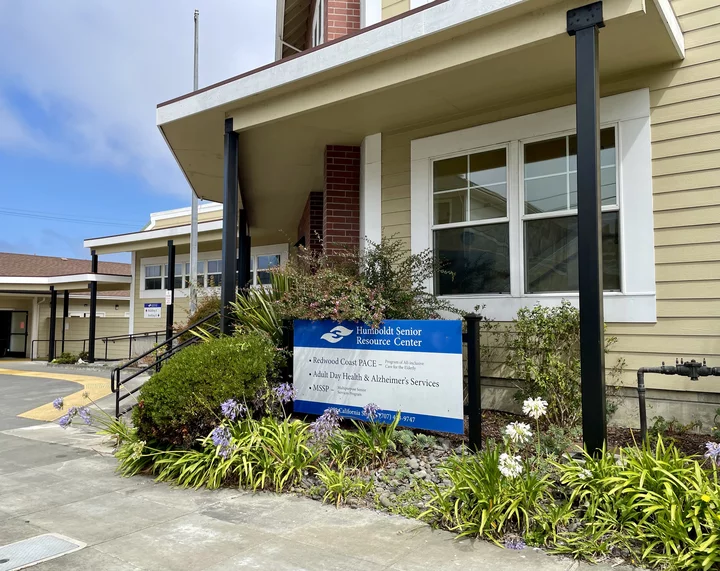
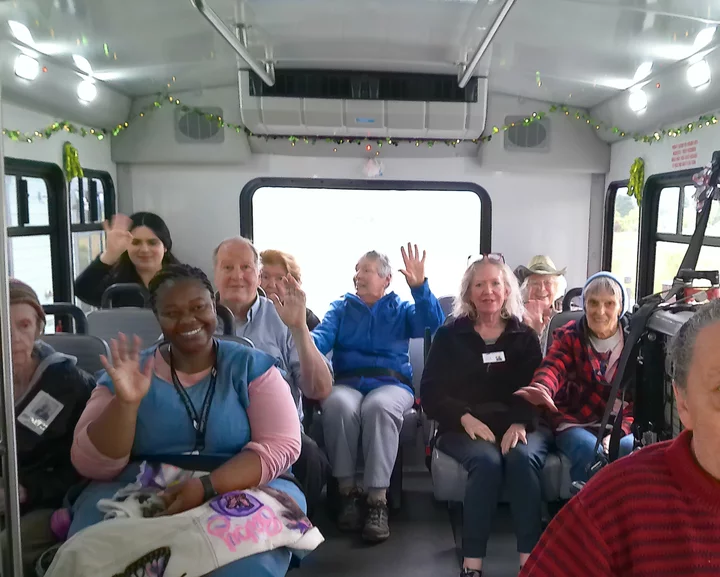
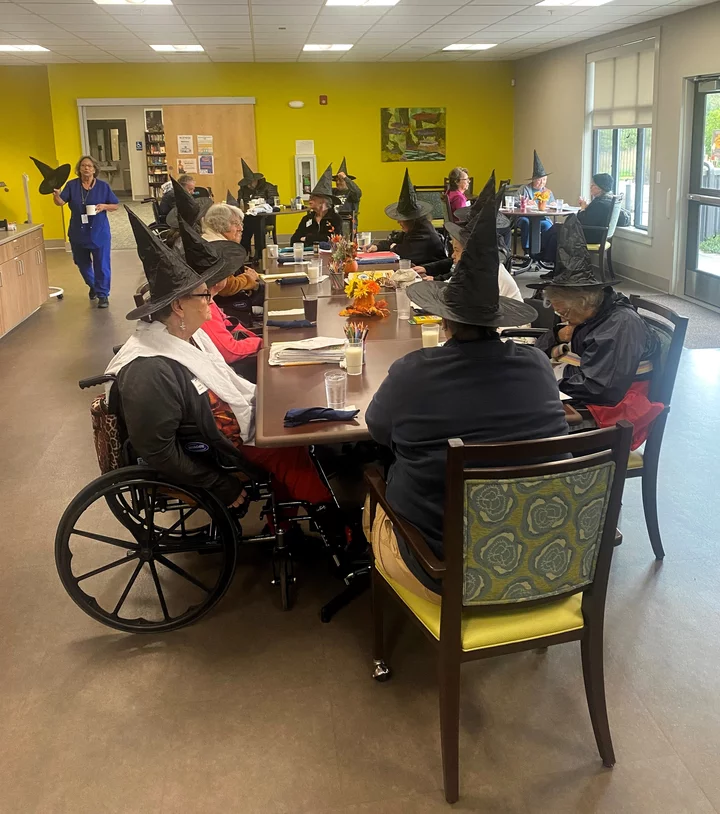
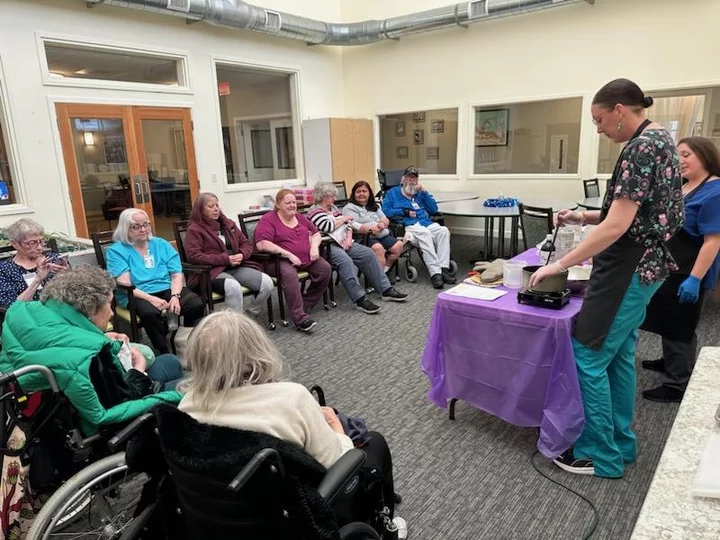
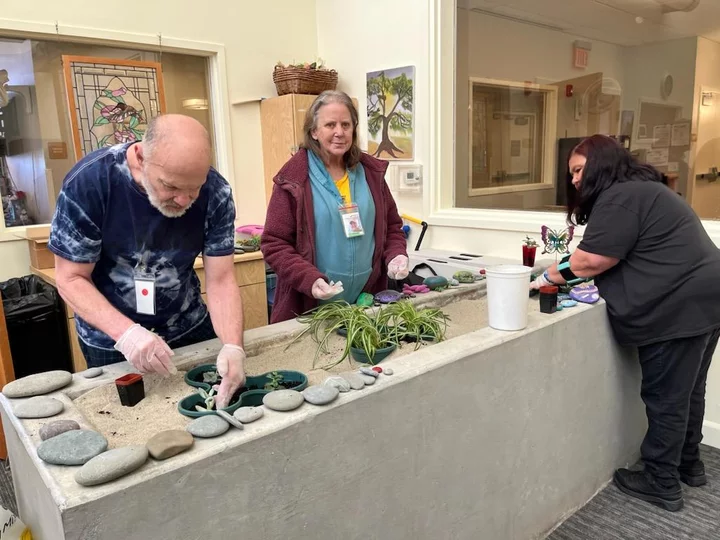

CLICK TO MANAGE